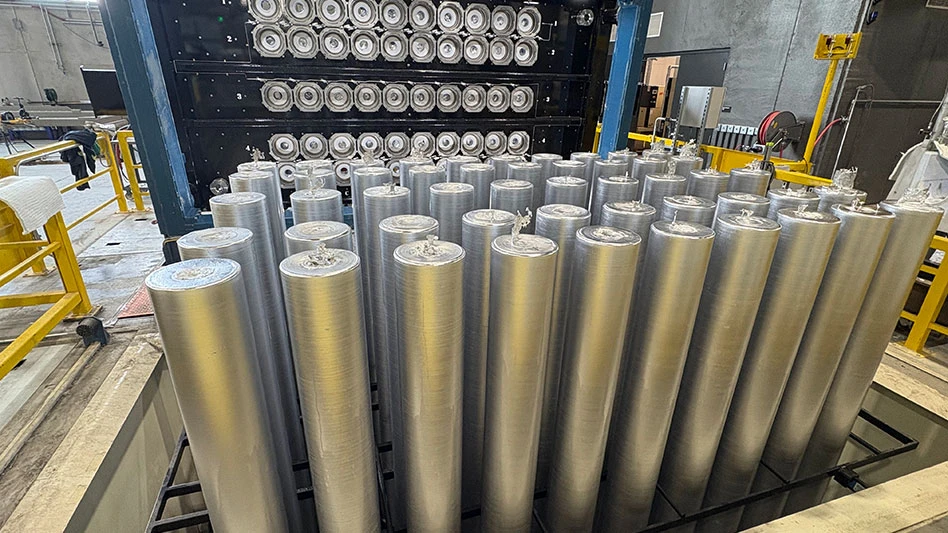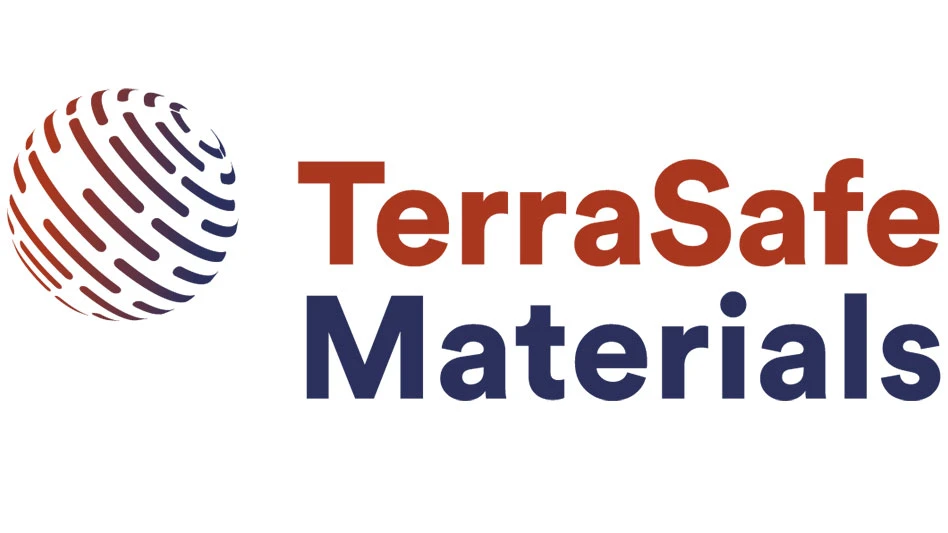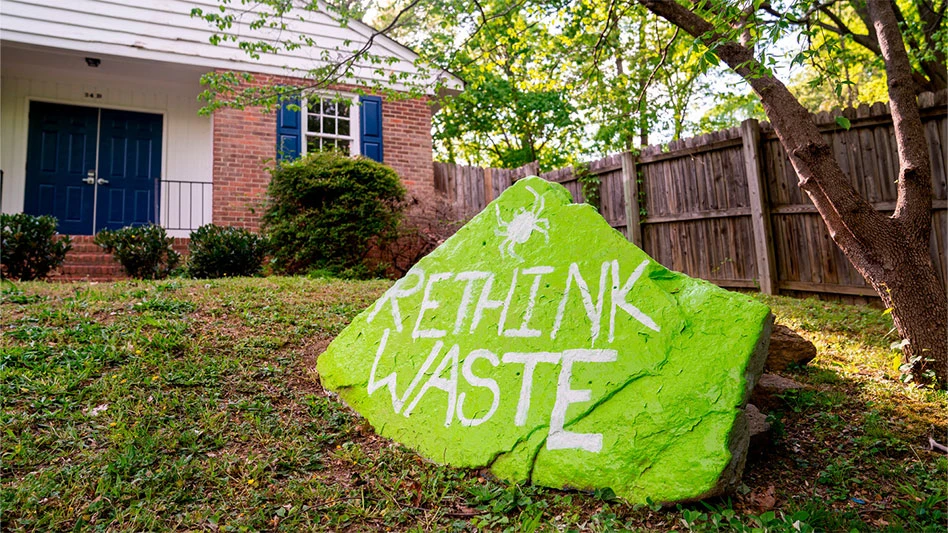 Shopping in a grocery or retail store can be overwhelming with many environmental marketing claims jumping off of packages to catch a customer’s eye. These claims are not always clear or transparent and can be deceptive to consumers.
Shopping in a grocery or retail store can be overwhelming with many environmental marketing claims jumping off of packages to catch a customer’s eye. These claims are not always clear or transparent and can be deceptive to consumers.
GreenBlue’s Sustainable Packaging Coalition (SPC) developed the How2Recycle Label to give consumers honest and easy on-package recycling instructions. SPC developed the How2Recycle Label with a group of stakeholders who acknowledged the need for clearer on-package recycling instructions. The label first appeared on packages in late 2011, and the program now has 37 member companies.
The goals of How2Recycle are to provide clear recycling instructions to consumers, to assist companies in complying with the Federal Trade Commission (FTC) Green Guides and to increase the quality and quantity of recycled materials.
Green guide
The FTC Green Guides regulate environmental marketing claims, including recycling claims. How2Recycle is consistent with these guidelines and incorporates direct input from the FTC. Unlike other environmental logos and labels found on packages, the How2Recycle Label gives instructions for action rather than just information about the company or product. Using four different label structures and additional messaging, How2Recycle Labels inform consumers how to dispose of their packaging.
The FTC Green Guides state that if more than 60 percent of the U.S. population has access to recycling a package type, then an unqualified recycling claim can be made. For any item with less than 60 percent access, qualifying language is required to explain that recycling may not be available. The lower the access, the more qualification required. Finally, if a package has a component that is a known contaminant to the recycling stream, a recycling claim cannot be made.
How2Recycle uses the familiar chasing arrows (or mobius loop) symbol for packaging in the “Widely Recycled” category. This label indicates that at least 60 percent of the U.S. population can recycle the package at curbside or drop-off locations. In How2Recycle, a package that has between 20 percent and 60 percent access carries a “Check Locally” label with qualifying language to inform consumers that this package is “not recycled in all communities.” Packaging with less than 20 percent access or that contains a known contaminant to the recycling stream receives the “Not Yet Recycled” label.
While on-package information is helpful, communities throughout the U.S. have varied access to recycling of different packages. The How2Recycle Label puts crucial emphasis on the need for consumers to understand their community recycling capabilities above all else.
Beyond the curb
The Store Drop-off Label is a unique opportunity to promote the recycling of plastic bags, films and wraps that are eligible to be recycled at grocery and retail store drop-off locations. Flexible plastics made of pure low-density or high-density polyethylene (LDPE or HDPE) are eligible to be recycled at these locations. How2Recycle’s Store Drop-off Label communicates to consumers that they can recycle these bags at stores in their area.
The majority of How2Recycle member companies use the Store Drop-off label on their packages. Today, the label can be found on a variety of polyethylene (PE) packages, including dry cleaning bags, carry-out bags, produce bags, packaging air pillows, zipper bags, case wraps over toilet paper and paper towels and many more.
 The American Chemistry Council’s (ACC’s) Flexible Film Recycling Group also strongly promotes the expansion of flexible PE recycling. In support of How2Recycle, ACC provides generous sponsorships allowing companies using the Store Drop-off label to join the program at a discounted or waived annual fee for the first year. Of the How2Recycle Label’s 37 members, 13 benefit from ACC’s sponsorship. There is no question that ACC’s support has and will continue to boost adoption of the Store Drop-off Label and substantially increase film recycling.
The American Chemistry Council’s (ACC’s) Flexible Film Recycling Group also strongly promotes the expansion of flexible PE recycling. In support of How2Recycle, ACC provides generous sponsorships allowing companies using the Store Drop-off label to join the program at a discounted or waived annual fee for the first year. Of the How2Recycle Label’s 37 members, 13 benefit from ACC’s sponsorship. There is no question that ACC’s support has and will continue to boost adoption of the Store Drop-off Label and substantially increase film recycling.
Additional sponsorships are available through StopWaste, Alameda County, California’s public agency responsible for reducing waste. StopWaste offers funding for companies headquartered in Alameda County to join How2Recycle with a waived annual fee for the first year of membership. Eligible Alameda County companies include a large variety of brand owners, packaging manufacturers and retailers that can benefit from clear on-package recyclability messaging by joining the program. ACC and StopWaste facilitating the adoption of the How2Recycle Label will help GreenBlue reach its goal of 50 member companies by 2016.
Expanding its reach
Expansion of the program would not be possible without the commitment and promotion by current How2Recycle members. Seventh Generation uses the How2Recycle Label on 95 percent of its packages; Target Corp. is using the label on private-label brands such as Up&Up, Market Pantry, Archer Farms and Simply Balanced; and General Mills labels brands including Green Giant, Betty Crocker, Chex, Yoplait and all of its cereals.
Member companies also promote How2Recycle on their websites, at conferences and in sustainability reports. At SPC’s recent event, SUSTPACK, three representatives from How2Recycle member companies (Target, ConAgra and Annie’s) spoke about their successes through How2Recycle and how the program drives decision-making in packaging conversations.
With companies rapidly gaining interest in How2Recycle and current members looking to expand to as many brands as possible, GreenBlue is excited to grow the program. In 2014, the program began using Brandfolder to manage label artwork and to allow member companies to access and download label artwork as needed. Each piece of label artwork has an item number and a description for easy search, selection and implementation into companies’ packaging processes. The How2Recycle Brandfolder is a “living” library of labels in that GreenBlue staff are constantly creating and uploading new artwork at companies’ requests. This automation process has exponentially increased members’ implementation of How2Recycle Labels.
Consumer feedback
In February and August of each year, GreenBlue provides How2Recycle members with consumer feedback data obtained through our online survey at www.how2recycle.info. This URL is found on every How2Recycle Label to allow consumers to search for additional recycling information or provide feedback on the program and labels. Since the survey’s start in 2012, GreenBlue has received more than 1,200 responses.
The feedback survey confirms that GreenBlue is successfully reaching many of its goals for How2Recycle. More than 80 percent of survey takers find the labels easy to understand, which is not always the case with on-package logos and labels. For example, resin identification codes (RICs), the symbols with a number inside of chasing arrows, are often misinterpreted as indicators of recyclability. GreenBlue is working to combat this confusion using How2Recycle labels. Consumers receive a personal response from GreenBlue if they have questions about the program or RICs.
Behavioral change leading to an increased availability and quality of recycled material is an essential metric of success. More than half of survey takers who saw the label on a package changed their behavior by recycling more flexible plastics at store drop-off locations, following label instructions, starting to recycle more items or seeking out further recycling information. Of those that did not change their behavior upon seeing the label, the majority either already knew how to recycle the package or did not have access to recycling in their area.
Survey takers also think very highly of companies that use the How2Recycle Label, with some even stating that they will make purchasing decisions based on whether a company uses How2Recycle. Nearly 80 percent of survey takers feel more positively about companies using the How2Recycle Label, stating that they feel that companies using the label care about the environment, have widespread sustainability goals and are transparent and honest.
As the How2Recycle Label gains momentum in the packaging industry, GreenBlue finds that consumers continue to think positively about How2Recycle and companies continue to show interest in joining the program. GreenBlue looks forward to further success in 2015.
Interested companies should contact Anne Bedarf at anne.bedarf@greenblue.org or Danielle Peacock at danielle.peacock@greenblue.org for more information on joining the program.
Kelly Lahvic is a former project associate with GreenBlue, Charlottesville, Virginia. More information on the How2Recycle Label is available at www.how2recycle.info.
Get curated news on YOUR industry.
Enter your email to receive our newsletters.

Explore the May 2015 Issue
Check out more from this issue and find your next story to read.
Latest from Recycling Today
- European Commission drafts new rules for chemically-recycled content in plastic bottles
- Redwood Materials launches Redwood Energy
- Cirba Solutions announces new human resources executive
- Cascades to close packaging site in Niagara Falls, New York
- The Glass Recycling Foundation awards $137K in grants
- Goodwill Industries of Ontario Great Lakes and Rotogran International announce collaboration
- Textile Recycling Expo USA launches in Charlotte, North Carolina
- SSAB trials using crumb rubber from scrap tires in steelmaking





